One of the biggest worries for anyone considering an electric vehicle is charging. Many often mentioned range or charging anxiety. It's a big change plugging in an EV rather than refilling a ICE vehicle with petrol/diesel at a petrol station, which many would have been doing for decades.
How is charging an EV different to refuelling an ICE vehicle?
The obvious difference is that you don't pump liquid fluid into the tank, rather you plug them in to an electricity point, just like we do a mobile phone.
Many worry it will take far too long to recharge an EV compared to an ICE vehicle. I often hear people say 'once EV's can be recharged in 5 minutes I may consider one'. When we consider the time it takes to drive to a petrol station, queue up, refuel and pay its likely more than a 5 minute task.
EV's need a different mind set. The main difference is an EV should be charged when it's doing nothing and we're busy doing something else. That's not something you can do with an ICE vehicle as you need to drive it to and from the petrol station. Theoretically we can charge an EV practically anywhere there is an electricity supply. That's pretty convenient compared to needing a petrol station.
Home Charging
If you have off road parking charging at home is likely to be the easiest and most convenient place to charge an EV. If you get an EV specific tariff such as Octopus Go or Intelligent it can be the cheapest way too.
It's a good idea to get a specific home EV charger point installed. Not only is it faster than using a 3 pin 'granny' charger its also much more safer too. When you consider the amount of energy that's being transferred and often for a long period it should be obvious there is a safety concern using a 3 pin 'granny' plug as a long term EV charging solution.
Plugging in the EV when I get home in the evening has just become part of my routine. It takes me just 30 seconds to plug it in and set the Zappi charger to Eco+ mode. The Zappi charger does the rest by charging the EV at 7kW according to the charge schedule I've set in the Zappi App.
The Zappi charger also lets me charge it during the Octopus Flux tariff low cost period between 0200-0500. This lowers the cost of recharging for me, and also helps the grid by charging during a low electricity demand period.
Public Charging
Public charging is often what people are concerned about. This is often where charger anxiety comes in. People worry that that may get to a charger point to find a long queue to use it or that its broken and out of service. Apps like Zap map can help you check if a charger is working prior to travelling to it.

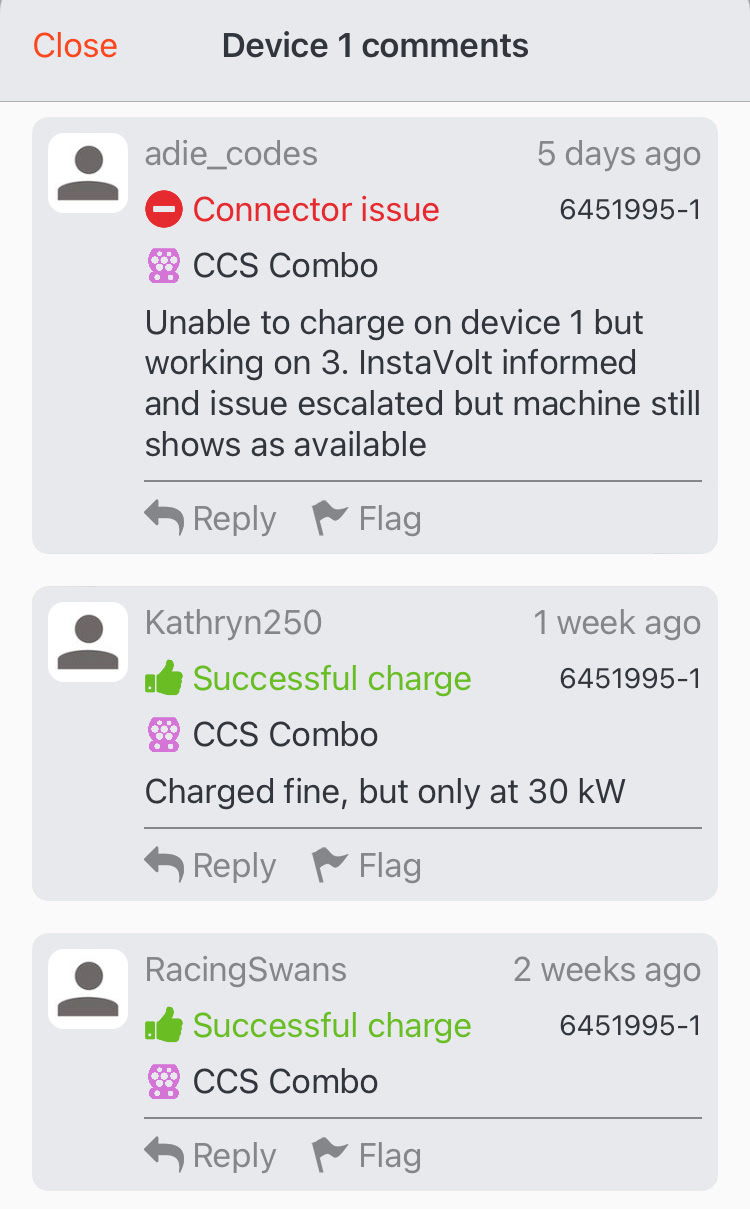
There are two types of public charging:
AC charging
This is the slowest method of charging, often at charge rates of 3.7kW, kW, 11kW or 22kW. Due to the lower power it can take quite a long time to recharge an EV due to the capacity of an EV battery. AC charging is measured in hours rather than minutes.
AC charging on a type 2 charger uses just the top section of the EV's chartering connection. Leaving the plastic cover over the bottom set of pins protects them from the weather when the charging flap is open.
Type 2 AC charging port on the Hyundai Ioniq 5
AC public charging can be useful as destination charging, where your EV is going to sit unused for a long period of time. They aren't really practical for a quick recharge stop on a motorway services.
AC charging pretty much maintains the charge rate across the battery SOC. This means AC charging can often top up a battery between 80% to 100% faster than DC charging. This is useful if you need a full charge and a DC charger is too slow at this point (more on this below in DC charging below). AC charging is often cheaper than DC charging.
DC Charging
DC rapid charging is the fastest method of charging an EV. DC chargers are available in different sizes, often from 50kW, 150kW and 350kW. The fastest 350kW DC chargers can recharge a compatible EV from 10%-80% in just 18 minutes.
DC rapid charging on a CCS connector requires the whole of the charging socket to be used. You have to uncover the extra pins by removing the small cover over the bottom section.
CCS DCcharging port with the extra cover removed on the Hyundai Ioniq 5
Whilst your initial thought will likely be the best option will always be to chose the fastest charger available, but this isn't always the case. Many current EV's won't actually benefit from the current fastest 350kW DC charger. As can be seen below the DC charge curves of the Hyundai Kona and Ioniq 5 are quite different.
DC charging curve of the Hyundai Kona
DC Charge curve of the Hyundai Ioniq 5
On a 350kW charger the Kona will top out at around 77kW and steady step down to 25kW by 80% SOC. The Ioniq 5 on the other hand will top out at around 220kW and steady step down to around 110kW by 80% SOC.
The reason why the Ioniq 5 accepts a higher power compared to the Hyundai Kona is due to its 800V battery technology. This means it's capable of going from 10% to 80% charged in just 18 minutes!
One thing to note with rapid DC chargers the kW charge rate often drops off considerably after 80%. To be honest I don't rapid charger past 80%. Often it will take as long to go from 80% to 100% on a rapid DC charger as it took to go from 10% to 80%. Due to this charge tail off its often better to move onto a slower 22kW AC charger to finish up to 100% if you really need a full charge (unless you have a small capacity battery you probably don't need 100% on public charging). Making a second DC rapid charge stop later can be a better option for most people.
How fast is too fast?
The push towards faster DC rapid chargers is good in a way as reducing the recharge times will solve one of the reasons why people EV slate EV's compared to ICE vehicles.
For me though we should consider the dwell time of a location. If its a location where your vehicle will be parked for several hours like a park and ride car park AC destination chargers are likely the most useful charger type. Here DC chargers such as the 50kW DC charger are neither fast or slow enough to be useful and would take up valuable grid capacity (i.e. several 7kW AC charger would be able to use the same capacity needed by a 50kW DC Charger).
If it's a service station on a busy A road or motorway 150kW and 350kW DC chargers can really help. For many the 350kW chargers at GridServe's Electric Super hubs are pretty overkill as their EV won't benefit from their faster charging power.
The other issue as I've found out is that they can be too fast. Only recently I was using one at Watford Gap Services on the M1 for a quick 'get me home charge'. I only just had enough time to go to the toilet before it was charged sufficiently to get me home.
It also feels we're getting to the point where advancements to faster chargers aren't making the impact they once were. If we consider the difference between a 50kW DC charger and a 150kW DC charger when charging a Hyundai Ioniq 5. Increasing the charger power by a multiplication of 3 means the overall charge time as been reduced to just a third of that of the 50kW charger. A reduction from 62 minutes to just 21 minutes is a huge benefit in terms of recharge time.
When you compare the difference between a 150kW DC charger and a 300kW DC charger doubling the charger power has only reduced the overall charge time by 20%, or just 4 minutes.A 4 minute reduction just doesn't sound as good as a 41 minute reduction does it.
Hyundai Ioniq 5 DC rapid charging times - Source EV Database
We should consider dwell time of a service station. Motorway service operator Moto say "the average dwell time for customers at a Moto services was about 17 minutes". Welcome Break on the other hand say they have "an average dwell time of 20-30 minutes".
I guess GridServe have done their homework regarding the selection of 350kW DC chargers in their Electric Super Hub's. I'd personally I'd like to see some 150kW charger's in their Electric Super Hub locations, especially when you consider there could likely be two 150kW DC chargers for the same grid capacity used by one 300kW charger. My reason being queuing for a charger space at busy times will likely take longer than the speed benefit of a 350kW, even though I drive an EV that can take advantage of the faster 350kW DC charger.
This said if there were different sized DC chargers it would need EV drivers to understand which charger size was best for their vehicle i.e Kona drives not choosing to use a 350kW DC charger when it gives them no benefit over an empty 150kW DC charger.
Another reason is often I want to stay longer at a services than a 350kW DC charger could take to recharge my EV. 17 to 18 minutes isn't much time to walk to the services building, go to the toilet and enjoy a coffee, before getting back to the EV to unplug and leave. If the chargers were busy I'd feel inclined to stay with the car and move it as soon as its finished charging so I don't make others wait longer than necessary to get on a charger. That completely defies the logic of charging an EV only when you're doing something else!
Public Charging Stations
So far I've used a variety off public charging stations, from the 7kW destination chargers of BP Pulse and Connected Kerb, to the rapid chargers of InstaVolt and GridServe.
7kW Chargers
All of the 7kW public chargers I've just a normal parking space with a charging post at the end or to the side. You often need your own charge cable to use these. They are usually pretty simple to use.
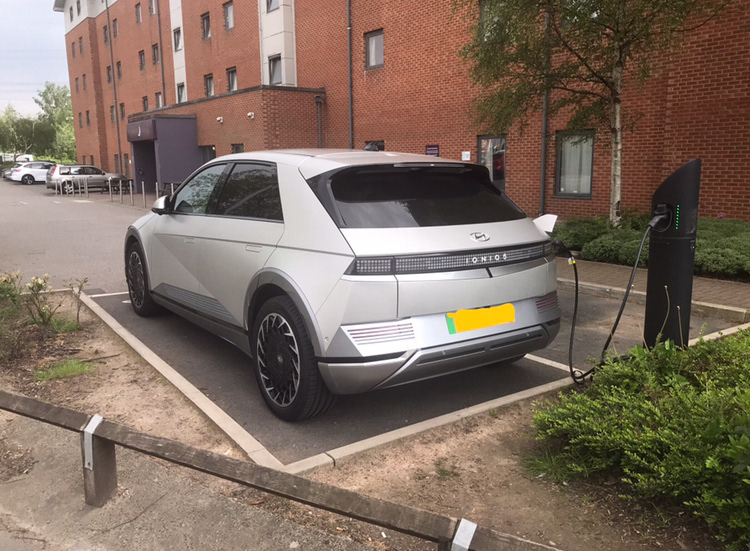
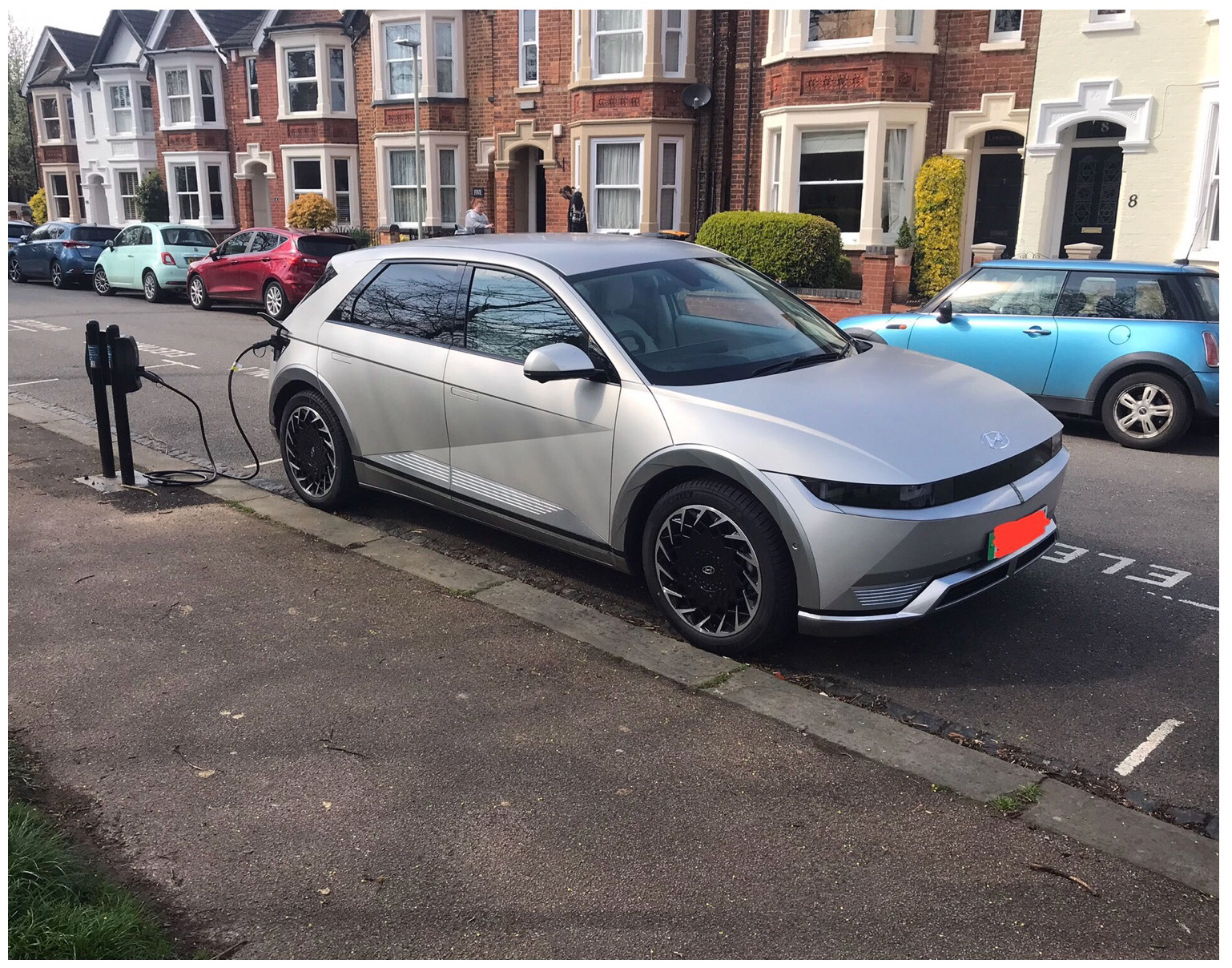
InstaVolt 120kW Chargers
Instavolt 120kW chargers are often located in the car parks of business premises such as McDonalds and Booths supermarkets. That's good and bad. The good being fast rapid DC chargers in useful public locations in towns where you may stay only for a short time or are passing through. The bad being they are often shoe horned into existing car parking spaces. That means there usually isn't much space to lug around the large rapid CCS cables, or in the case of the Ilkley Booths store not even enough space open your door due to the limited space between the car and the charger! I'd definitely like to see them widen the charger spaces to make easier to access. The Instavolt charging hub at Windermere is better in this respect. It should probably be used as the blueprint for all their charger locations.
I've also found the InstaVolt charger locations aren't as fast as I was expecting. The 120kW charger at the Ilkley Booths store would only charge at 59kW. Other people seem to have had the same issue so I suspect it may be a grid capacity issue at this location.
This all sounds a bit negative, but I've found they are generally good rapid chargers. They are definitely on my list of chargers I'd head for without hesitation.
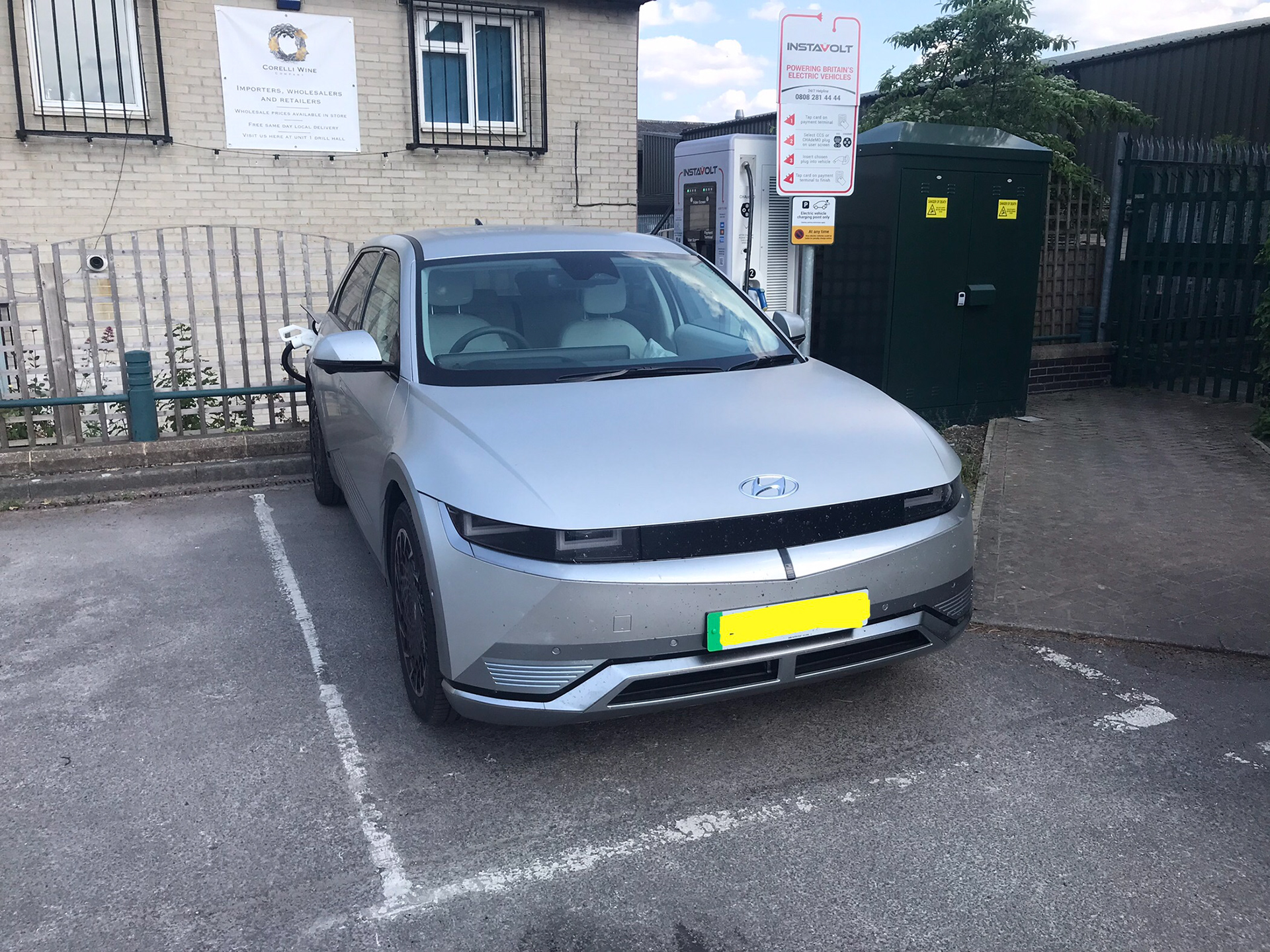
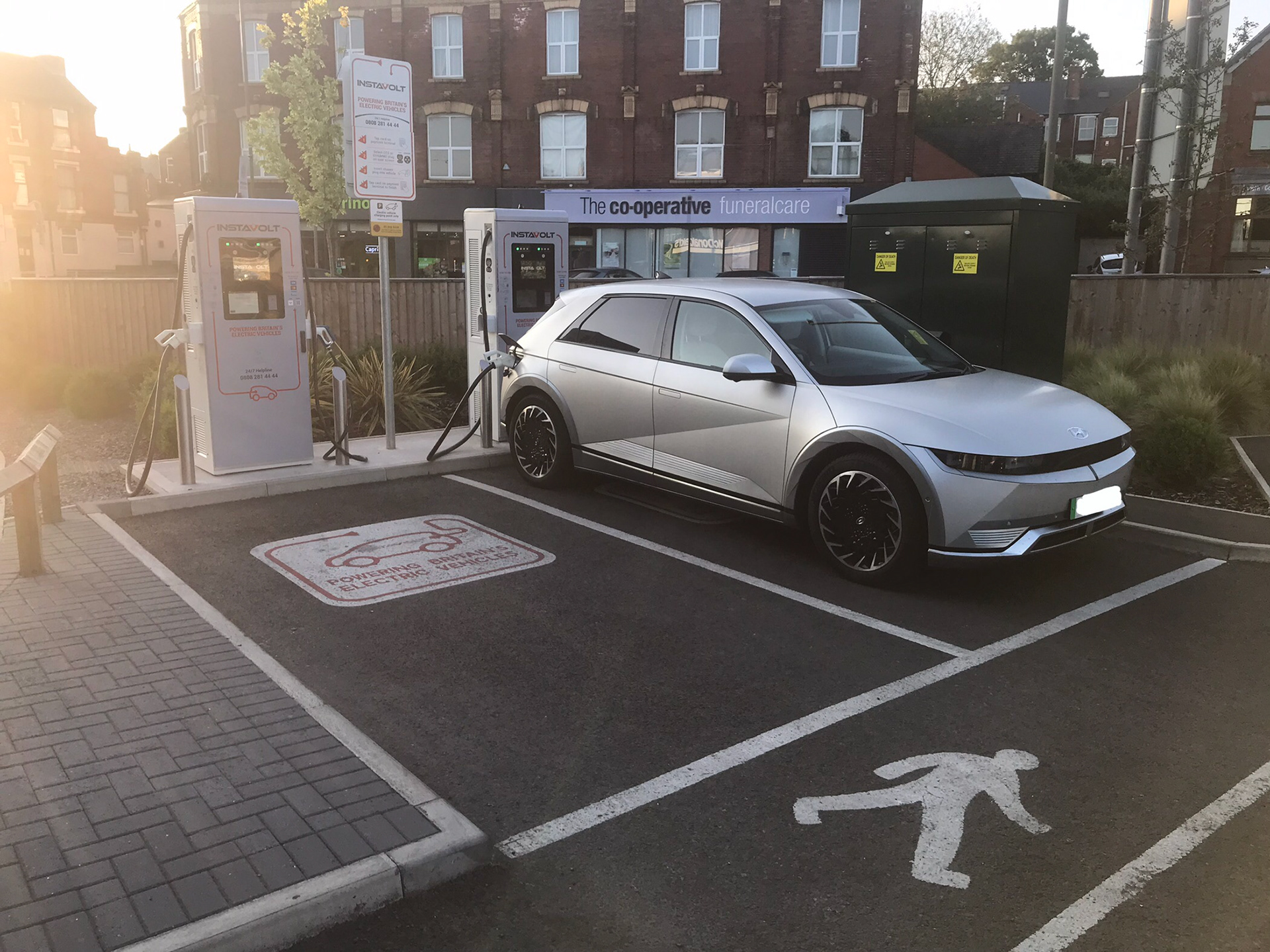
GridServe 350kW 'Electric Super Hubs'
Over the years, before driving an EV myself, I'd noticed the odd few GridServe 50kW CCS & 22kW AC chargers in Motorway Services. They always looked a little down trodden compared to the vast expanse of shiny Tesla Super Chargers nearby.
Until recently I've started to notice GridServe are adding their new 'Electric Super Hubs' to their existing locations at Motorway Services. I have to say they are as close to Tesla Super Charger locations as I've seen so far for non Tesla EV drivers. Good space/layout and fast speeds, what's not to like if you have a compatible fast charging EV.
That are definitely the main charging location I look for when going on a long trip. I'm also looking forward to visiting the GridServe Electric forecourt location in Norwich when I next head that way.
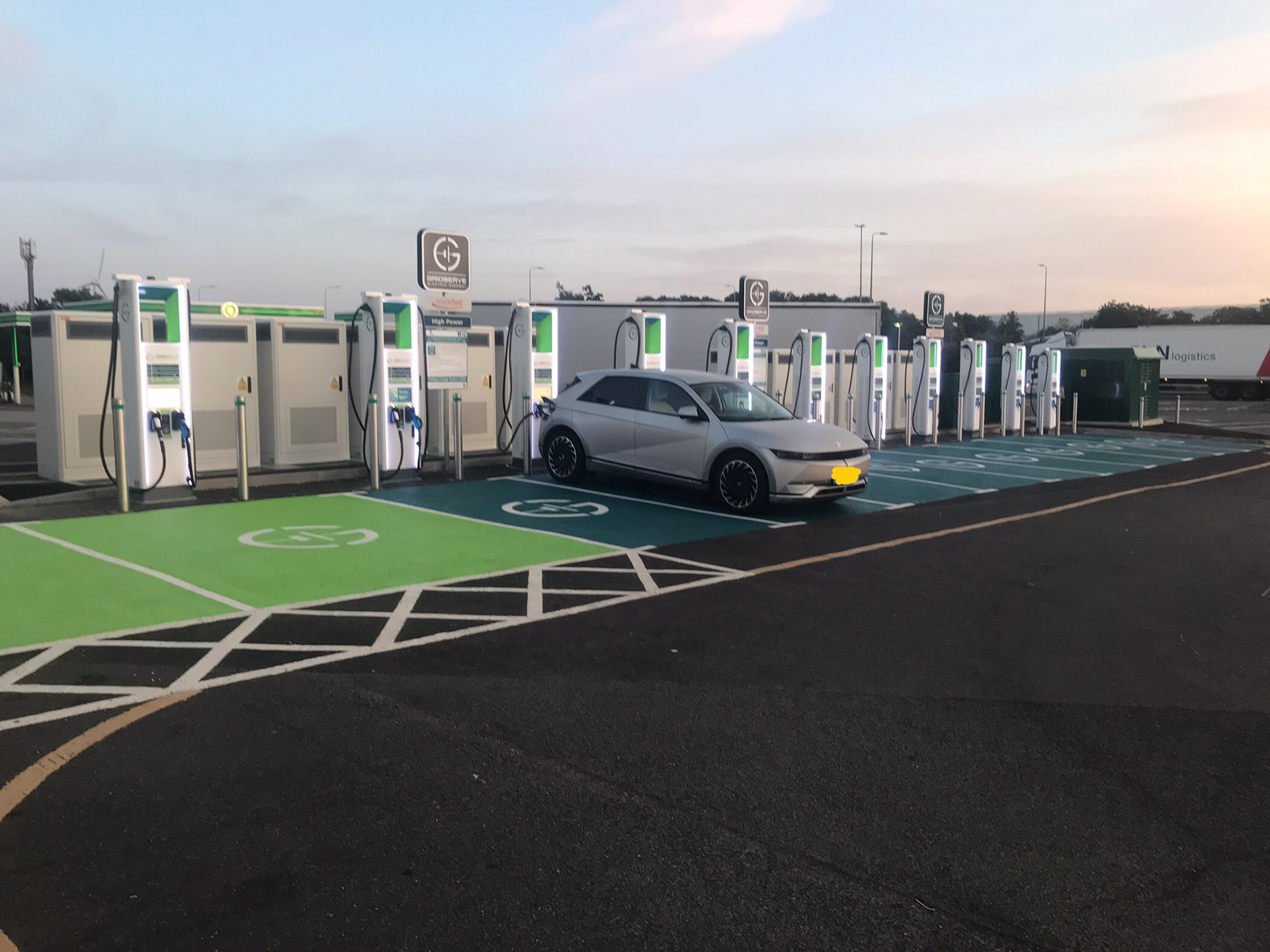
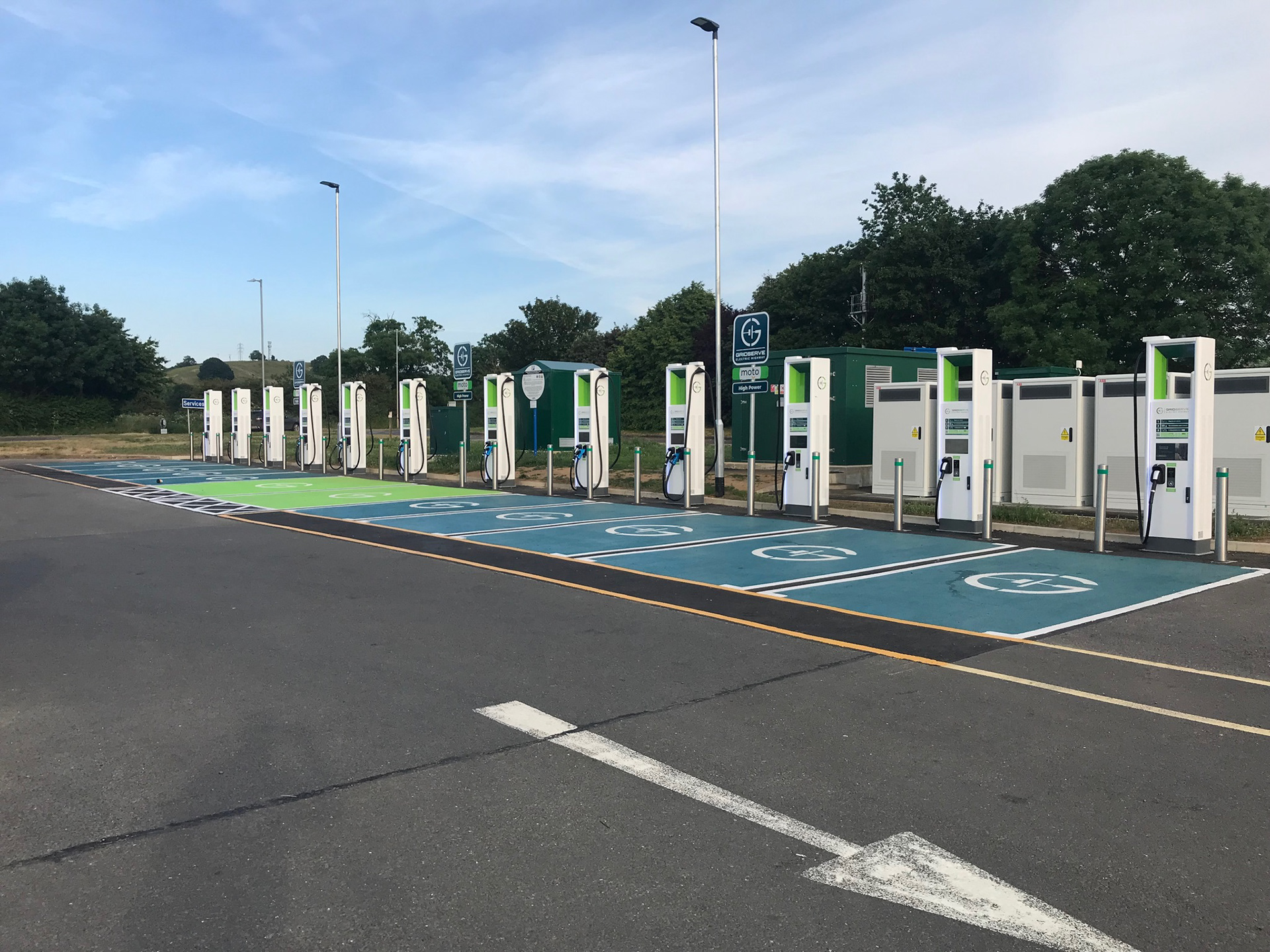
My ideal EV Charger Station Design
All of this has got me thinking, if I was to design my own ideal charging location set up what would my priorities be? How would it look?
For me my two main aspects of my ideal charging set up are easy access and space.
When I look at current EV charging locations it's made me think, perhaps we don't need to reinvent the wheel. Could we take our learning, experience and knowledge with ICE vehicles to help the introduction of EV's?
For decades we've adjusted and tweaked the concept of petrol stations into the what is the fast and efficient modern petrol stations which refuel thousands of cars per day in an efficient manner.
When we look at petrol stations they work in an orderly and efficient fashion. There is generally one way in and another way out. If they are busy there is generally an easy and orderly way to queue whilst you wait for a pump to become free. They also suit vehicles of all sizes too. There is generally space to be able to open car doors without hitting the petrol pump or another vehicle.
With current EV charger location designs we sadly can't say the same. Especially at busy times during school holidays when queues can affect the surrounding car park.
I'd recreate the idea of the petrol station by tweaking the current EV charger location design of GridServes Electric Super Hubs by:
1/ Utilising drive through spaces
To me this would be a more efficient traffic flow as those leaving don't come into conflict with those arriving. Always driving forwards is likely tom result in less accidental damage to chargers and EV's as may may find reversing difficult, especially in a busy location.
2/ Having two spaces - end on end
The front space could be the charging space, whilst the rear space would be a waiting space for the next EV to sit and wait in. This would also allow a double space for anyone towing or for larger commercial vans, both of which aren't suitable for most existing charging locations.
3/ Position the chargers at the side with extra space to both sides (just like petrol pumps)
This just seems to be a sensible position. Just like petrol pumps the chargers would need suitable length cables to reach charger ports on all sides of a vehicle. Additional space to all sides would be useful to aid access.
4/ Installing roofs
There can't be anything worse than needing to get out of the car to connect a charge cable when it pouring with rain. Roof's are such a simple solution to this problem. they are something every petrol station has and very likely for a reason too.
5/ Set a charge to x % when starting the charge
Rather than just plugging in and leaving until they unplug I'd get theEV driver to set the point at which they want to charge to .i.e to x battery %. This would enable the charger to know when the charge will be complete. The remaining charge time could be displayed as a count down on a larger screen above the charger so other EV drivers know which charger space to wait at.
6/ Notifications to the driver on charging alerts
The EV driver could be sent notifications via the charging app on their mobile phone to remind them when their charge will complete .i.e say 5 minutes before it will finish, or if their charge is already completed. Warnings could be sent if there are issues such as the charge failing (surely there is nothing worse than coming back 40 minutes later expecting the EV to be fully charged, only to find out it failed a minute after leaving the EV.
My ideal EV charging location layout
Final Thoughts
Charging an EV is quite a bit different to refuelling a petrol pump. It needs a different mindset in tthe most efficient charging method is when the EV's is doing nothing and you're doing something else. With new technology such as EV's making your first long trips is a bit daunting but with a little knowledge of the differences and a bit of planning it can be a relatively easy and stress free experience.
The UK charging network is going through a period of transition as newer, larger and faster charging hubs are built. That was only going to happen as the take up of EV's increased and there was an increased need for charging infrastructure. The new electric super hubs are a step in the right direction, but a little more thought and redesign they could be perfect for the future.